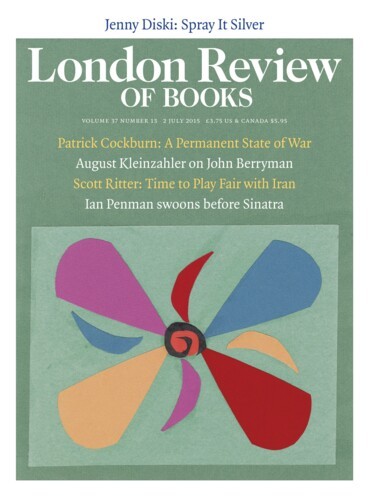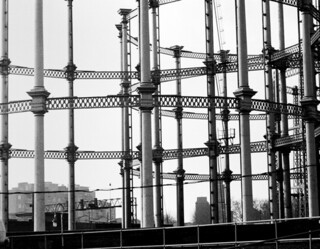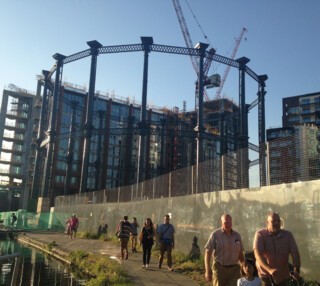In the days before Eurostar came to the area behind King’s Cross, before St Martin’s, the Guardian, Camden Council’s offices and (soon) Google UK, there existed a few cobbled streets and a couple of old railwaymen’s tenements. Battle Bridge Road, where the gasometers stood, was within a Victorian triangle formed by the two great railway stations of King’s Cross and St Pancras and the Regent’s Canal. Despite being listed, the gasometers disappeared in 1998. In their heyday they were much filmed and photographed – you can spot them in The Ladykillers (1955) and Mike Leigh’s High Hopes (1988) – and they stood for Northern England in any number of television dramas. Colin O’Brien’s photograph, from 1974, captures their bleak majesty and provides a memento of a very different London. It appears in a new book of his work, London Life (Spitalfields Life, 285 pp., £25, June, 978 0 9576569 5 6), that proves there were things in the world before Google, and places before Google Maps.
In the way of modern preservations, one of the gasometers (after a facelift in Yorkshire) came back to King’s Cross in 2013 and now lives a beautifully incongruous life overlooking the Camley Street Nature Reserve. In 1974, in their original spot, the gasometers may have been taken to represent work-to-rule Britain. Or perhaps that’s how we like to think of them now. Others saw them differently, nostalgically, a bit of the North in a place where the train from the actual North met its final stop.
The building facing the gasometers was called Culross Buildings, and it housed, at one time or another, Shane McGowan of the Pogues, the painter Peter Doig, and myself. We all watched one morning as a crowd of 1930s policemen clashed with the blackshirts at the foot of the gasometers: they were filming the Cable Street Riot. In those days, a group of young people made their home in the shadow of the gasometers. Never early risers, they got a fright the day the blackshirts went to battle with the police: when they opened their tents they thought the revolution had come.
Send Letters To:
The Editor
London Review of Books,
28 Little Russell Street
London, WC1A 2HN
letters@lrb.co.uk
Please include name, address, and a telephone number.



